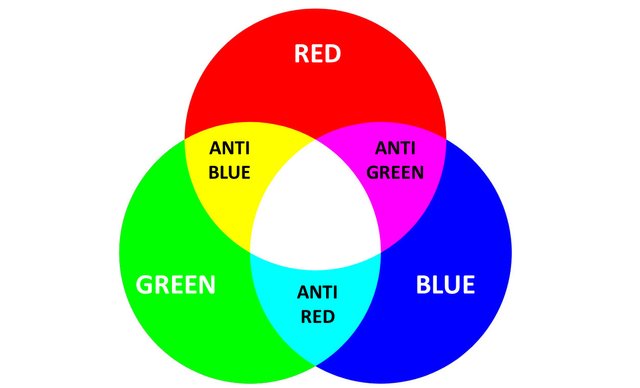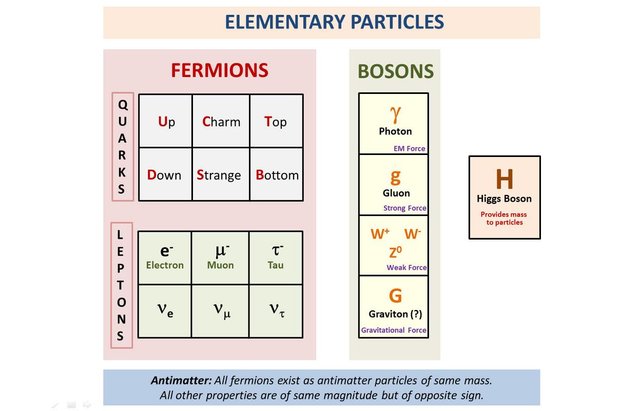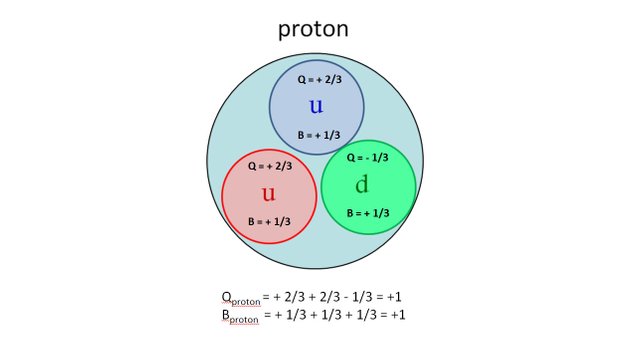Let quarks be free! (Particle Physics Series – Episode 3C)
Have you ever tried to rip out a quark from its proton?
No?
Let’s give it a go!

This article goes quite in depth so if you’d rather start with lighter content while still being amazed by the mysteries of nature, open the video below first .
Then, come back and enjoy the rest of the ride in text form.
Preliminary notes
If you know what are quarks and how they combine to make hadrons, then you can jump these preliminary notes and dive right in (start at next paragraph).
To fully appreciate this content, check out the 1st and 2nd episode of this series if you haven’t already. You can also find a summary of the main points at the end of this post (appendix 1 and 2).
Episode 1: Elementary particles, the building block of reality
This article presents the 17 elementary particles that build our reality. It is the first step of an exploration of the standard model of particle Physics.
Episode 2: Composite particles: let’s play Lego!
In this post, we play lego and learn that composite particles are formed of quarks. These composite particles are called hadrons which include baryons (neutrons & protons) and mesons (pions and kaons).
Episode 3A: Elementary fermions: the particles of matter…
Episode 3B: Where does the mass of hadrons come from?
These two episodes discuss the properties of elementary particles of matter AKA elementary fermions. The knowledge contained in episodes 3A and 3B are not necessary to fully enjoy this post.

1/ Let’s torture a proton
So here we have a cute proton on its merry way… Let’s catch it and pin it somewhere.

Now with tweezers, let’s catch one of the quarks and pull it as hard as we can. Let’s see if we can rip the guts out of this proton! (That’s my evil side coming out… do not worry, protons are not conscious nor alive… at least according to our knowledge ;-))

When I start pulling, the proton’s shape deforms a little. Good it’s giving in…


Wait...it's become really weird now...

I am pulling really harder now, but I am not deforming as much the proton. It appears that the more I pull, the more I need to increase how much I pull to deform the proton just a little more. It is like if the force between the quarks would be increasing exponentially with the distance between them.
Think about a spring in elastic mode. The energy I need to provide to stretch it increases as the square of the extension of the spring (Energy in spring = 0,5*kx2).
Well it feels a bit the same way here just much more pronounced. I do not know of a simple formula for the strong force, but I do know that more I put energy in, harder it becomes to deform further the proton.
There is a point when I bring so much energy to the system, that POOOOF!: two new particles emerge. Energy converted into mass and an [up; anti-up] quark pair came to existence.

They immediately recombine with quarks in their close environment. The newly created up quark takes the place of the up quark that I was trying to extract. The anti-up quark hooks up with the quark we pulled, and forms a pi meson (more commonly called a "pion")…

By trying to extract a quark from its proton, I end up with the same proton and an extra meson!!!

So whatever we do, it is just impossible to extract a quark from a baryon. Doing so requires so much energy that particles are created and combine with the original quarks to form new hadrons.
It's like if Nature doesn’t want us to discover its secrets…
This phenomenon is called Quark confinement: quarks can only exist within the confines of a Hadron.
This paragraph presented quark confinement using a very approximate visual representation. I invite the reader to explore further in the next paragraph. We will discuss what is actually the theory that describes how quarks bind together: Quantum Chromodynamics, the theory of the strong force. Let's see how this theory implies that quarks are to be confined within a hadron...

2/ Each fundamental force has a theory to describe it.
Within the standard model, each fundamental force has its own theory with great predictive powers. Do not worry these theories do not oppose each other. On the contrary, the standard model predicts their unification into one unified theory at ultra-high energies. In other words, at ultra-high energies, all forces would be the same one.
That could have happened for an ultra-short while when the Universe was hot enough (temperatures above 1027K), that is for a period that lasted 10-36 seconds from the initial instant of the big bang. In this post, we are interested in conditions encountered today, so let’s describe briefly the theories that describe the fundamental forces today.
Then, we will focus on the strong force so that we can understand why quarks need so much to stick around their buddies.
The electromagnetic interaction (or electromagnetic force) mediated by the photon and involving electric charges is described by the Quantum ElectroDynamic Theory (QED).
The weak interaction (or weak force) is involved in changing the flavors of quarks from one to another. For example, this occurs in beta decay processes that change a down quark into an up quark (and vice versa).
This process actually allows our sun to shine! To able fusion of hydrogen into helium, some protons need to convert to neutrons (via a Beta+ decay where an up quark becomes a down quark). I will most probably talk about this one day!
Some have been tempted to call the theory describing the weak force "quantum flavor dynamics" or QFD. However, theoretical progress these past few decades has shown that the weak interaction processes cannot be compartmentalized so easily. There is much we still do not understand about them, at least, not as well as those described in QED (EM force) and QCD (Strong force).
A more appropriate description of the weak force has emerged and is provided today by the electroweak theory (EWT).
The strong interaction (or strong force) which binds quarks together, and also nucleons in the nucleus of an atom, is described by the Quantum ChromoDynamic Theory (QCD). The term “Chromo” here refers to color…

3/ Let’s have some fun with colors…
Yes, quarks have colors, but not in the traditional sense, of course! The term color refers to a specific property of the quark and is quite convenient. The rules of QCD somehow mimic those of color mixing.
For example, if you add blue, green and red, you get white.
You can also see the complementary color of a specific color like its anti-color. For example, yellow is also anti-blue. You can see on the graphic that if you add anti-Blue and Blue you also get white.

Well, one of the rules of QCD is that all composite particles must be white.
Take our proton, it is made of three quarks, a red one, a blue one and a green one. The color of the Proton is thus, white.
The pi-meson we created while torturing our proton (remember, we were pulling its red up quark). Well, the pair creation that occurred during that process was that of a red and an anti-red (cyan) quark. When recombining we also obtained a red-antired meson. The color of the meson is thus… white…

The main rule is that the particles affected by the strong force must be white to be found in isolation. As all quarks have a color charge… quarks cannot exist in isolation… Another name for quark confinement is thus color confinement.
Now what happens if I try to break this colorful harmony.

4/ Let quarks be free!
We noticed that when one attempts to pull out a quark from of its hadron, the force required becomes ridiculously large, and the energy provided favors the formation of a quark anti-quark pair, that then recombines with the original quarks. This is an opposite behavior to the electromagnetic force that decreases with distance.
Is the strong force a monotonous function (i.e. its variation with distance does not change sign)?
Well, it appears to be so. Closer the quarks to each other, looser they are bound… Actually some experiments have shown that quarks in a proton are actually quite loose and floating nearly freely. A little like a fish is free to explore his water tank, but cannot get out.
This characteristic, a pillar of QCD is called asymptotic freedom.
Sorry Quarks, you cannot be set free...

Appendix 1 – Elementary Particles
Let’s have a look at the list of elementary particles listed by the standard model.
There are 12 particles of matter, called fermions. Fermions form matter as we know it. Actually, in our day to day life, only the first column of particles forms matter (up quark, down quark, electron). There is also this cute particle, the neutrino that is also involved with matter, yet indirectly. I will post in episode 3E a video about this cute little baby.

The particles of the two other columns are produced in conditions of high energy, for example, in particle accelerators, during naturally-occurring energetic collisions between particles like cosmic rays hitting our atmosphere, and other extremely energetic phenomena. In the conditions we live in, particles of the second and third column are not stable.
And the reason why there are 3 columns and not 2, or 4 , or 67? … well.. we have no clue… there is a Nobel prize to win here… Want to give it a shot?
The standard model lists also particles of force called bosons. By being exchanged between particles, bosons mediate the forces that can occur between these particles, hence shape their interaction.
And finally, the Higgs Boson, predicted 50 years ago, but discovered only this decade, is a special type of boson . For example, one of its roles in the standard model is to make a property emerge for many of the elementary particles: mass. Yes, it gives them mass. If you want to know more, great content about the Higgs have been recently published on Seemit by @lemouth (Click here to consult this paper).

Appendix 2 – Building Protons and Neutrons out of Quarks
We know that the nucleus of an atom is composed of protons and neutrons bound together by the strong nuclear force. Both protons and neutrons are nucleons, which themselves are member of a larger family called the baryons.
Baryons are composite particle formed from 3 quarks. Mesons are also composite particles, but these are formed from 2 quarks.
All particles that are formed with quarks are called hadrons (that includes therefore baryons and mesons).
Quarks have “quantum numbers” associated to them. These numbers can only take discrete values. Two important ones are the electric charge and the Baryon number.

For example both the up quark and the down quark have a baryon number of +1/3, and their charges are +2/3 and -1/3 respectively.
Grouping 2 up quarks and 1 down quark will form a particle that has a baryon number, B = +1/3 +1 /3 + 1/3 = +1, and charge of Q = +2/3 + 2/3 – 1/3 = +1. B = +1, so it is a Baryon. Q = +1 so it also has a positive charge. This composite particle is a proton!
Grouping 1 up quark and 2 down quarks will form a baryon with B = +1 and Q = 0. This one is a Neutron.


The 'Particle Physics' series is aimed at providing an introduction to the world of small scale physics to non-scientists and high school students preparing for their high school exams.
Previous episodes:
- Elementary particles, the building block of reality (Particle Physics Series – Episode 1)
- Composite particles: let’s play Lego! (Particle Physics Series – Episode 2)
- Elementary fermions: the particles of matter… (Particle Physics Series – Episode 3A)
- Where does the mass of hadrons come from? (Particle Physics Series – Episode 3B)
Need some more particle physics?
If you wish to sharpen your understanding by approaching particle physics via the angle of a professional researcher in that field, feel free to explore @lemouth series of articles on particle physics. He has started a new series recently at the occasion of the first SteemSTEM meeting a the LHC.
- Episode 1: The structure of matter
- Episode 2: interactions and symmetries
- Episode 3: All about the Higgs
- Episode 4: Theory predictions
- Episode 5: The challenges of the searches for new phenomena

Sources, references and to dig deeper:
- Small Scale Physics Part 2 (booklet written for my students)
- https://en.wikipedia.org/wiki/Color_mixing
- https://home.cern/about/updates/2013/02/free-quarks-calculating-strong-force
- https://en.wikipedia.org/wiki/Gluon_field
- https://en.wikipedia.org/wiki/Color_confinement
- https://en.wikipedia.org/wiki/Asymptotic_freedom
Hardcore explorations of the subject (pdf free top download)
Image credit:
- Image with fundamental and complementary colors by Quark67, CC BY-SA 3,0 (link)
- All other pictures and visual elements are public domain or free for use commercially. They were found either on Pixabay or on Wikimedia.
- All illustrations, diagrams and friezes put together by @muphy.
- Video and music on video produced by @muphy.

Hi,
I’m @muphy (see intro post),
My life revolves around music production, teaching sciences, and discovery through travel.
You enjoyed that post? Resteem and Upvote!
You are interested in these topics? Follow me!
Being A SteemStem Member
I love particle physics as long as debate is in layman terms.
Great article, will check the other two and I hope you continue with this subject. Also you got quite a lot of up-votes, means, it is worth continuing with this subject ;-)
You know, upvotes are good, but are not everything :I have discovered something extra that posting provides:
1/ It makes me brush up on my own knowledge
2/ I research the subject before writing, and learn a lot in the process
3/ The knowledge I bring is aimed at people that are not specialists. I love allowing other to discover new things. And for some, it makes them realize that they have a vocation for it (I am teacher... that's probably why :-) )
4/ It allows me to interact with people all around the world. Even if Internet has been there for 20 years, it never cease to amaze me...
Always loving your post.....u educate me a lot.....well i just finish the university...going for youth service by april.....i studied physics education.....proudly an educationist.....teaching physics "science " has always been a dream.....looking forward working with u on this platform.....thanks again one more......
If I understood correctly, you just finished studying how to teach Physics?
If so, I am glad that you appreciated my post! :-)
I never studied formally how to teach physics, I did it by eperience (classes at Uni, high school, groups and 1 on 1 students).
From this life long sample, I see what works and what doesn't work with Teens. I take pride to make young people hooked on Physics. Especially when they call me years later to tell me that there are now deeply involved in the subject, while they 'hated' sciences when I started tutoring them, lol!
That makes me notice something really important: the way Physics is taught can be more important than the content itself! It can get a teen utterly addicted to sciences, or disgust him of sciences forever...
There is no science in this world like physics. Nothing comes close to the precision with which physics enables you to understand the world around you. It's the laws of physics that allow us to say exactly what time the sun is going to rise. What time the eclipse is going to begin. What time the eclipse is going to end,I study myself more than any other subject. That is my metaphysics, that is my physics.No one undertakes research in physics with the intention of winning a prize. It is the joy of discovering something no one knew before.
Thank you so much for this useful post you are always teach us in a easy way that why i am always love your post i found them more intersting and easy to understand even if you discuss a complicated issues but in a easy way.
Thank you @zahia.
Yes, it can be quite a challenge to explain something apparently complicated in simple ways without compromising too much on accuracy.
But I love doing that: I love it when people that do not know about a topic suddenly get interested, maybe even fascinated.
Who knows, one of them that didn't have the opportunity to study physics, might actually be a future hidden Einstein and start to dive deep into it!
Someone just needed to open his or her eyes... As a teacher, I am proud to take this role,
Yes you are right and we are also proud of you. You are our professor on science in this platform.
Nice post, as usual.
Just a comment (as usual too) :)
This is the first time I heard 'Quantum FlavorDynamic Theory'. Actually, this is a name that is not used anymore (after googling a little but, I have found it). Please trade if for the theory of the electroweak interactions. This sounds much better to my ears :D
Actually two comments: this is why we accelerate the protons to very high energies. There, the quark becomes free as the strong coupling constant is actually not constant but vary with the energy (by virtue of quantum effects).
And a third comment, to come with the coffee: the 'pi-meson' wording is not really used. We prefer to call those guys pions :)
Oh yes, yes... I totally understand this conversation
:/
Hi @lemouth, thank you for your great comments, as usual :-)
I actually stumbled on the term QFD recently, and I liked it. I chose it on purpose due to the clear categoriation it provides (QED, QFD and QCD). I know from a previous discussion we had, that the recent theoretical progress has made this delimitation void, and that the term electroweak is more representative of our current understanding and models. However, I stick to the old description for now, for clarity purposes, until I find a way to express the new description with the same simplicity (Still, I will add a few words to the post).
I also use Pion with my IB students, never Pi-Meson, haha! But here I chose this wording as it reminds the reader that is just discovering this topic via Steemit, that a pion is a Meson without needing him or her to go to the appendix or consult elder posts. yet, it is a good idea to add the name pion in brackets.
I definitely don't like QFD (I cannot even find it has been heavily used in history)... The reaons is that understanding the origins of flavour is one of the big puzzle of our time and we don't have any solution yet, although plenty of proposals for an underlying theory. By reading it like this, it sounds like being a solved problem, which is not. I hope you understand my concerns (this one I will not let it pass).
Also, QED and QCD are special in the sense these are unbroken symmetries. The symmetries are exact. The story is different for the weak interactions.
On different topic, you may like this illustration. Data shows that at small energies, the strong coupling is stronger and stronger (confinement) and at large energies, it is weaker and weaker (asymptotic freedom). :)
That is a very convincing argument, and it does hit a chord.
There is a fine line between simplification (so that all can understand) and accuracy, and here I agree, I kind of crossed it a little ;-).
Thanks for this excellent remark. I edited the text.
Thanks a lot! :)
Could understand more better with those graphics thanks for sharing the video too : )
It took me time to produce them, especially the one with the tweezers deforming the proton.
But if it makes people get it, it is well worth it!
A few pictures can show in an intuitive way a complex process. Sometimes better than a 1000 words!
I am glad my efforts help you and others discover the wonders of nature at the infinitely small scale.
very educative post..Am beginning to love physics...The processes are really interesting.
.jpg)
Thank you David. That is the whole idea. Show that if you dive in a little, Physics is really fascinating and much less complicated than it appears at first...
this is the reason why i love science something new to discover always
Well, if you don't already, follow @SteemSTEM. They curate and resteem the scientific articles on Steemit. That will place in your feed fascinating articles written by people that know what they talking about!
Be careful though, it is quite addictive... ;-)
interesting this post was to learn along in the series thanks for sharing it
Thank you... Soon an exam haha!
Dont' worry (joking)... or maybe not ;-)
Great post. Well organized content. Professional such an expert. Proud when you read it. Thanks @muphy for the useful post such this.
Thank you. I am glad you enjoyed this read.
Of course professional (I am one ;-)!
Be well!
Nice works. Wait for the next of your best. @murphy